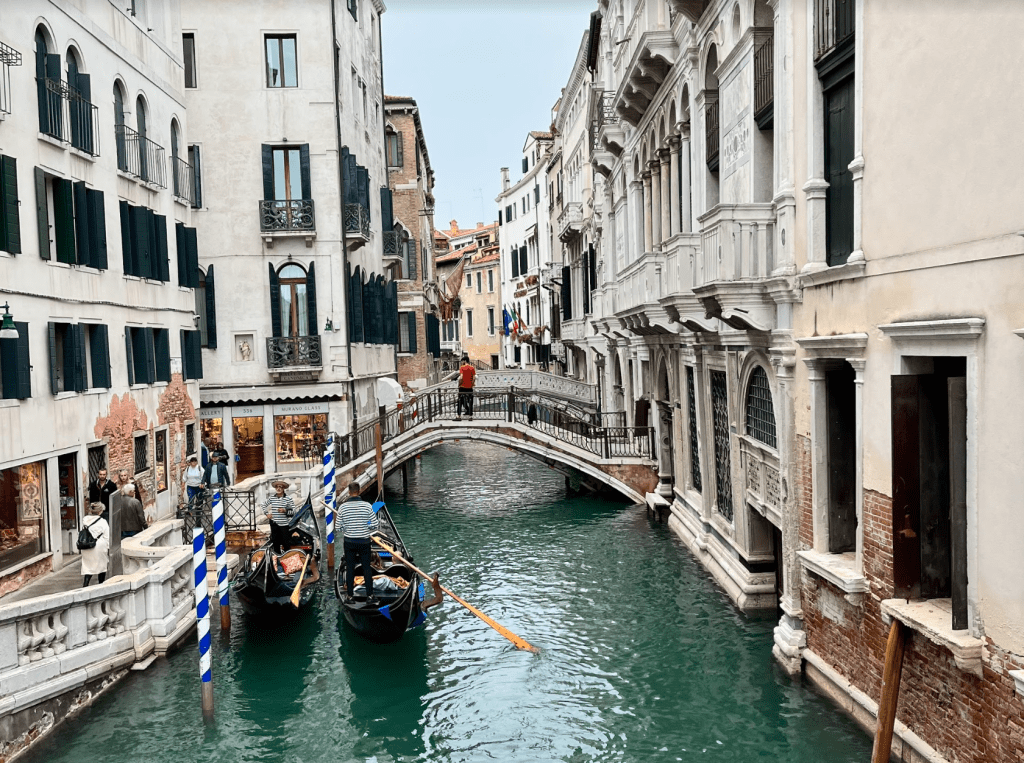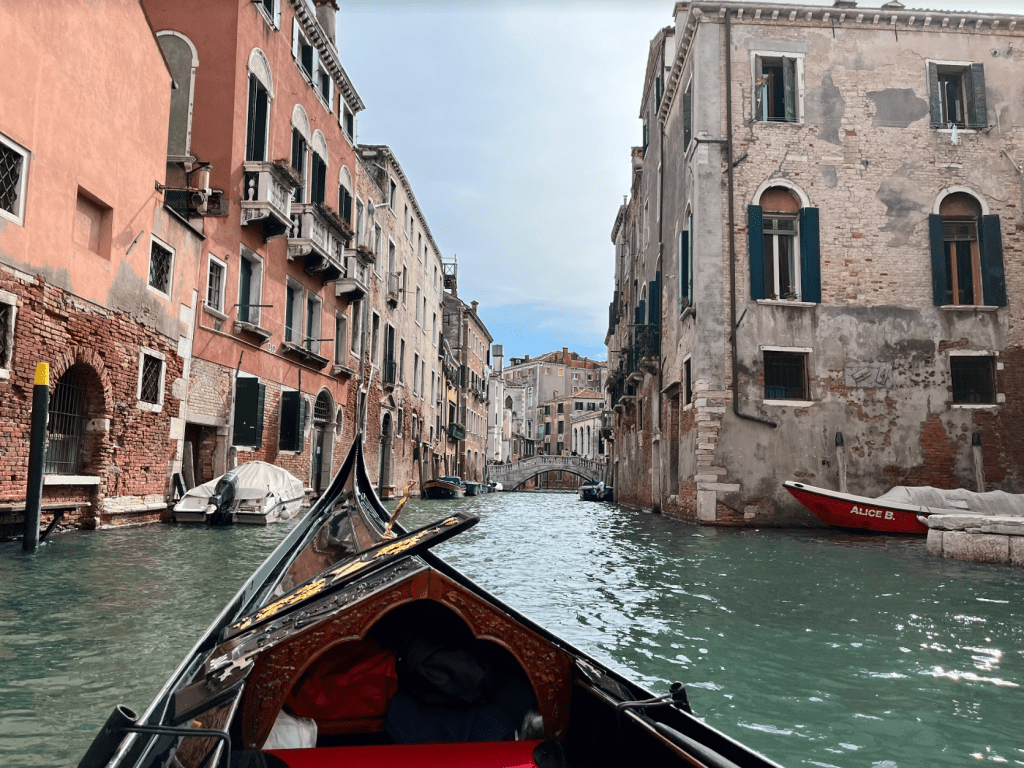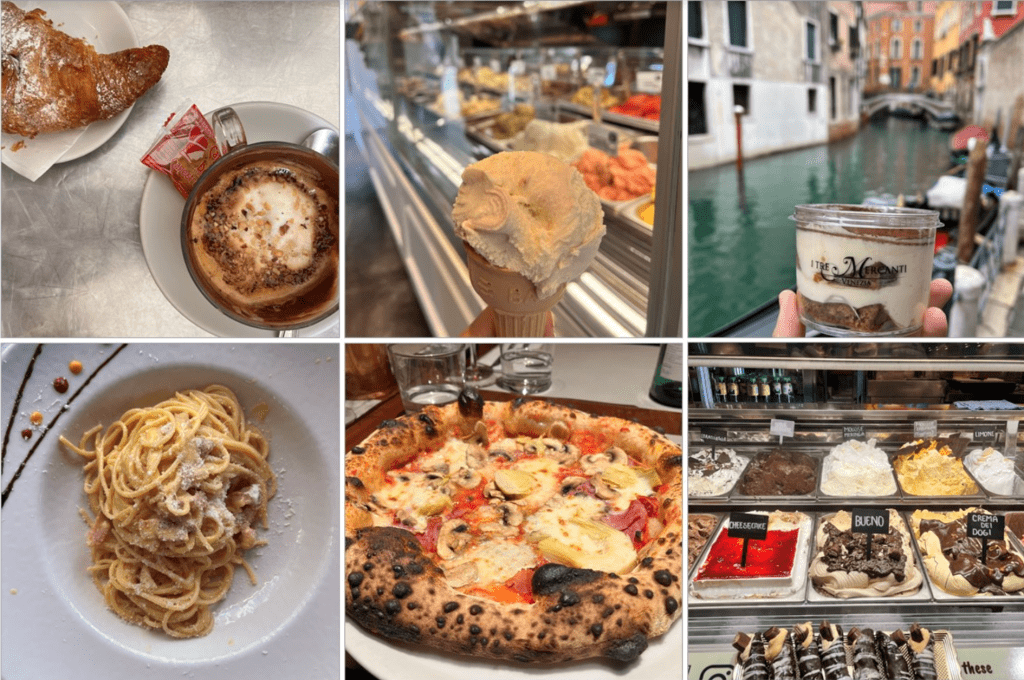Written by Lillian
November 10th, 2022
For the second half of Spring Break, my friend and I took a train up to Rome from Naples!
On the first day, we decided to hit some of Rome’s iconic historical sites; the first being the Colosseum. The Colosseum was used to host gladiator battles for the entertainment of the Roman citizens and the Emperor. At least once, the colosseum was used to host a naval battle which involved filling the entire arena with water from the Roman aqueducts. Then, prop ships would be floated on the water to simulate mock sea battles!
To me, the most impressive thing about the Colosseum was the size: the entire stadium can host more than 50,000 people, and the arena was built in 72 AD, almost 2,000 years ago. The fact that this huge stadium is still standing with excellent structural integrity is a testament to Roman engineering.
Next, we went to the Roman Forum and Capitoline Hill across the street. The forum was used as the central meeting area in Rome, and Capitoline Hill was used as the center of religious and political power. The Hill has multiple temples dedicated to the Roman Gods such as the Temple of Jupiter, the god of the sky and thunder; the Temple of Juno, the goddess of marriage and childbirth; and the Temple of Minerva, the goddess of wisdom.
Finally, we went to Pantheon, a former Roman temple and Catholic Church. The Pantheon has influenced a lot of modern day political and academic buildings such as the U.S. Capitol, the Thomas Jefferson Memorial, and Jefferson’s Rotunda at the University of Virginia.
Left: Roman forum. Right: the Pantheon.
The next day, we hit the Trevi Fountain late at night which was super crowded. Just in the small plaza that held the fountain, there were at least a couple hundred people all squeezing to try and get a picture of the fountain. The late time that we got to the fountain did not dissuade any of its visitors. When we finally got to the front of the line, we tossed our coins— backs to the water, right hand over the left shoulder— into the fountain to make our wish. While iconic, we agreed that the crowds and wait time made the fountain not worth the visit. Because it was so crowded and stressful, we couldn’t even admire the architecture and marble sculptures. There are dozens of other fountains, monuments, and buildings that are just as gorgeous for half the crowds. However, the upside to the fountain is that all coins tossed into the fountain are donated to the Caritas Charity which funds international emergency relief programs, poverty and homelessness programs, and other programs. Every year, over $1.5 million is donated from the fountain!
We also walked to the Vatican City which is thirty minutes from the Colosseum and the Forum. The Vatican City is the world’s smallest independent nation-state and is run by the Catholic Church. The state is also home to St. Peter’s Basilica: the largest church in the world at 15,160 square meters. The entire church is built in marble and ornately decorated in gold. It was gorgeous and impressive.
Left: St. Peter’s Basilica from St. Angelo’s Castle. Right: the inside of St. Peter’s Basilica.
In order to fuel all the walking around we did in Rome, we feasted on pasta and pizza for every meal. I tried all of the iconic Roman pastas including Carbonara and Cacio e Pepe. However, my favorite dish was the all’amatriciana. This dish consists of a tomato sauce base with bacon, pepper, and pecorino cheese. Another cool food fun fact: street Roman pizza is completely different from Napoleon pizza! They are made on large rectangular pans and your server cuts off rectangular pieces from the pie. These pieces are weighed, reheated in an oven, and served. You then pay for the weight of the pizza you selected! The pizza crust in general is a lot thicker and fluffier— almost like your pizza toppings are on a slice of toasted focaccia bread.
Stacciatella gelato, all’amatriciana pasta, buffalo mozzarella cheese and prosciutto, and Roman style pan pizza. Everything was super delicious!
Walking around Rome, you are surrounded by some of the most amazing architecture and engineering marvels. All of the buildings and monuments are so well preserved. The biggest issue that I found with Rome was that it was very touristy. Almost every shop that we walked around sold the same Roman Colosseum trinkets, gelato, and Roman dishes. However, it is very easy to stray from the busy streets into the quieter neighborhoods and admire the roman essence of architecture.



